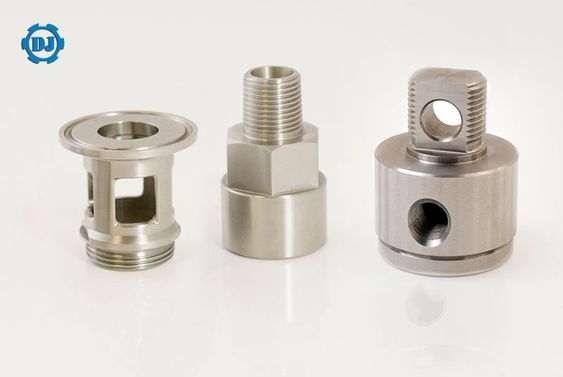What is Passivation of Stainless Steel - Why and How to Passivate Stainless Steel Parts | Dajin Precision
Through various processing like cutting, stamping, and welding, the original protctive layer on the stainless steel is often damaged, which resulting in the corrosion resistance of the metal is greatly reduced, so passivation of stainless steel is usually necessary. Here we’ll discuss why and how to passivate stainless steel parts.

What is Passivation of Stainless Steel?
Stainless steel passivation refers to the metal interacts with the oxidizing medium and form a very thin, dense and well covered passivating film on the surface of stainless steel parts. How does it work? In passivation of stainless steel, the free iron on the exterior of the metal will be removed with an acid solution, then the other components of the chromium or nickel alloy are left as the layer. If the passivated CNC stainless steel parts are exposed to the air, these elements will react with oxygen to produce an oxide layer can prevent corrosion.
Why Passivation is Required for Stainless Steel?
- The oxide layer attached on the stainless steel surface usually the compound of oxygen and metal, it can separate the metal from the corrosive medium and prevent their contact, so as to basically stop the dissolution of the steel and in a passive state, resistant corrosion.
- Welding, cutting, grinding and mechanical polishing may alter the stainless steel surface and leave contaminants such as iron, chlorides and other contamination from an external source.
- Regular passivation is a way of preventative maintenance, to keep the system in a pristine passivated condition and avoid potential problems.
- The stainless steel passivation solution is simple to use, only need to be soaked in the water at room temperature, which greatly reduces the labor intensity, does not need special processing equipment and strict additional conditions, effectively reduces the cost.
- Passivation solution is a kind of stable agent, which will not decompose, precipitate, convenient to transport and can store for a long time.
How to Passivate Stainless Steel Parts?
1.Industrial passivation
Dip the stainless steel machined parts in a nitric acid or citric acid solution for about 20 minutes, to dissolve any free iron or other contaminants from the stainless steel surface, oxidizes the chromium and clean it at the same time. Citric acid passivation is more effective than nitric, it only removes iron and safe to environment.
2.Home passivation
If you don’t have nitric acid or citric acid, first clean all dirt, oils and oxides on the surface, use an oxalic acid based kitchen cleanser and non-metallic pad to scour the surface thoroughly, until it becomes bare metal and passivate itself.
Dajin Precision provides multiple surface finishings such as polishing, passivation, sandblasting, laser engraving, as well as quality CNC turning services of stainless steel and more metals.
